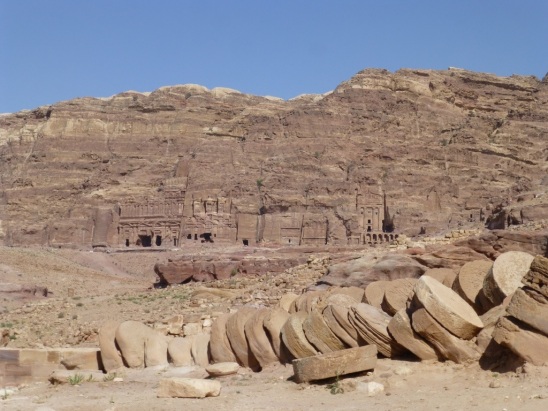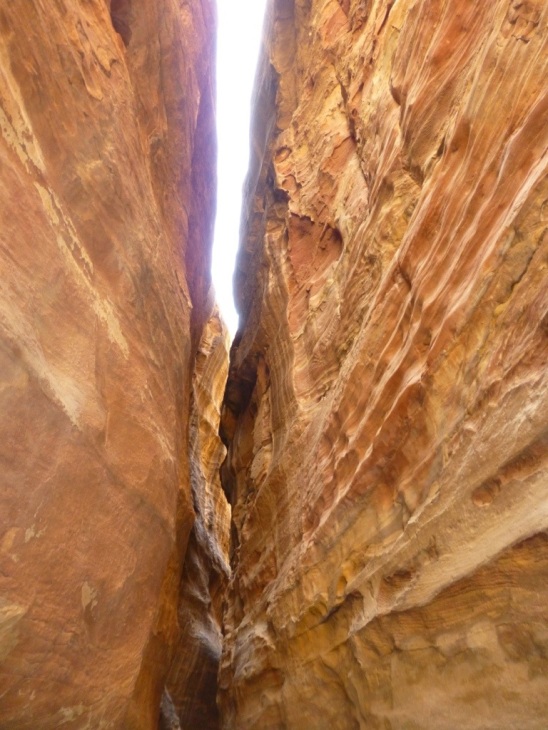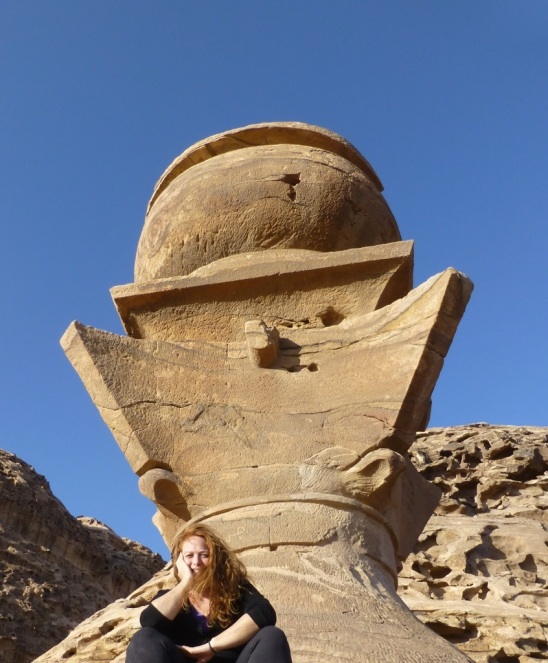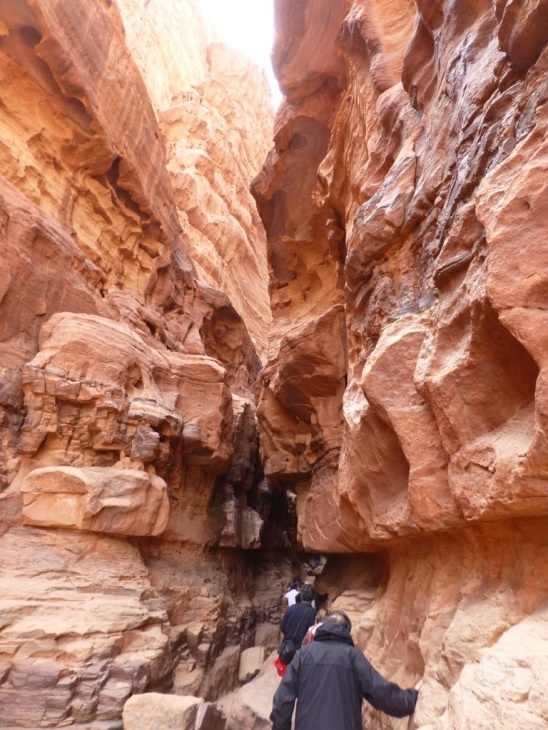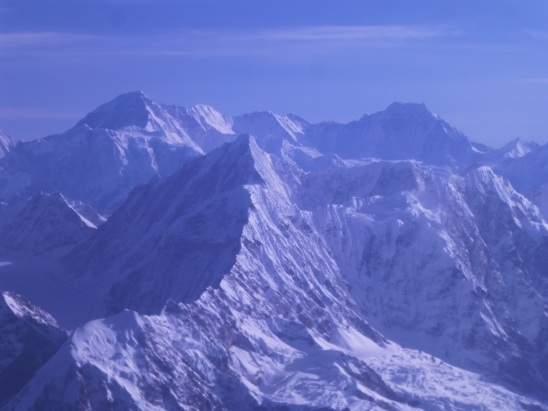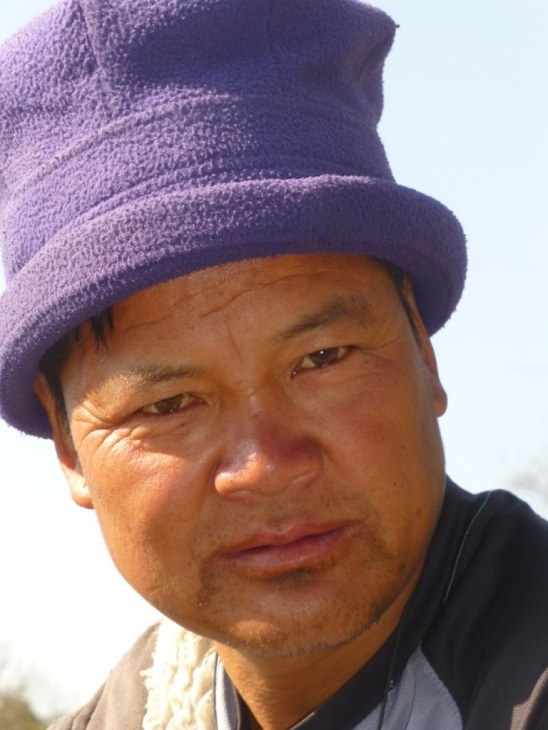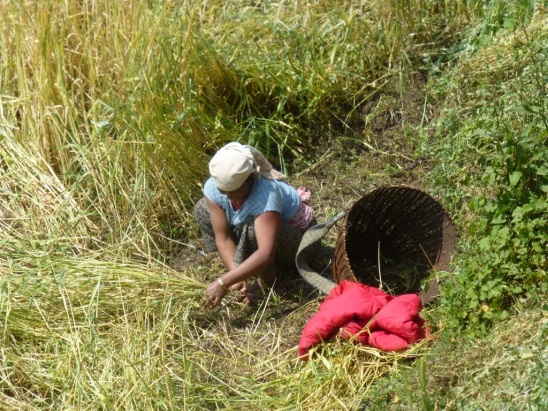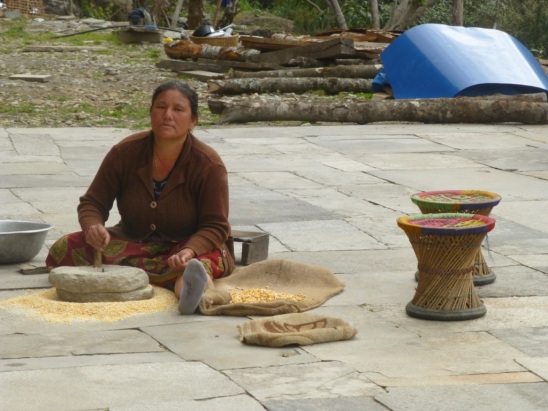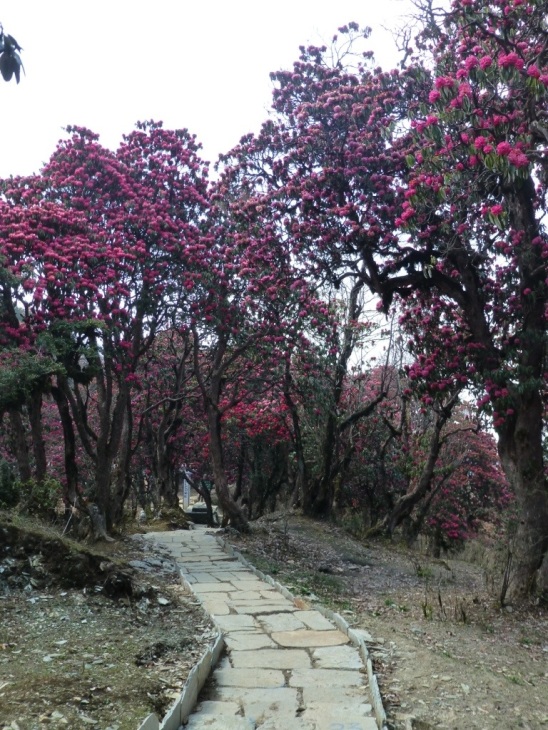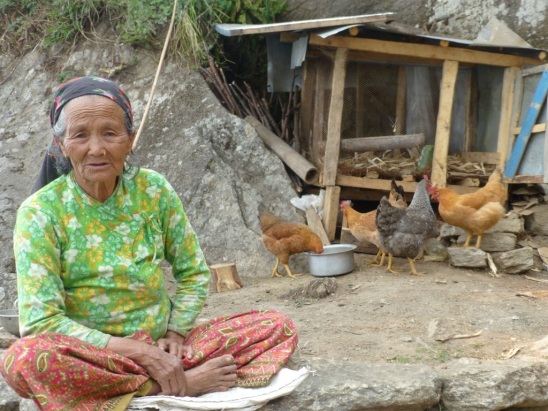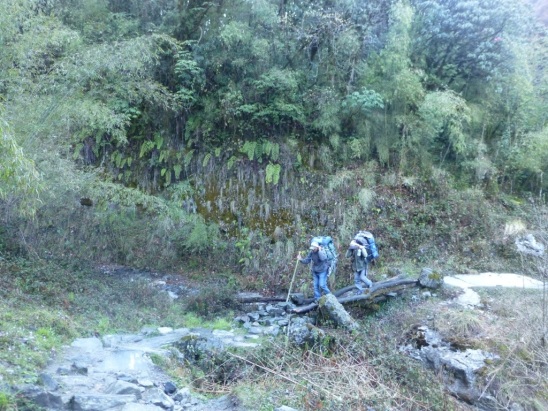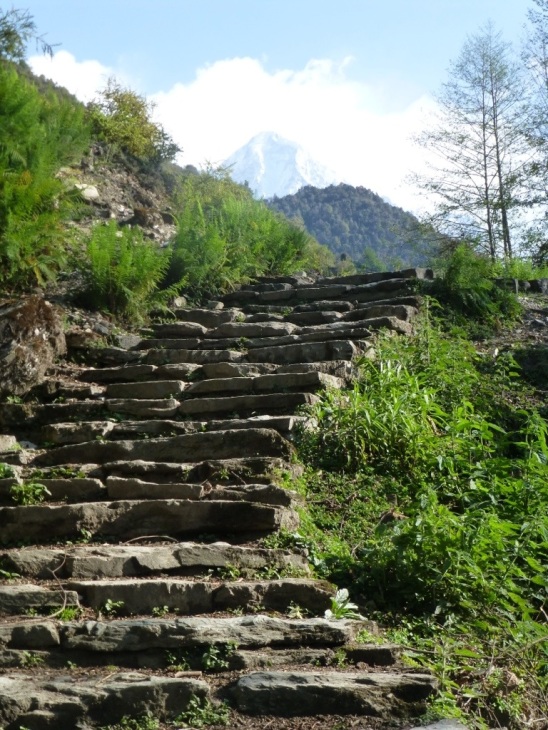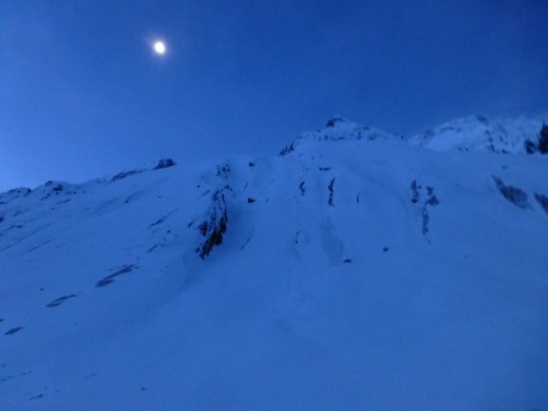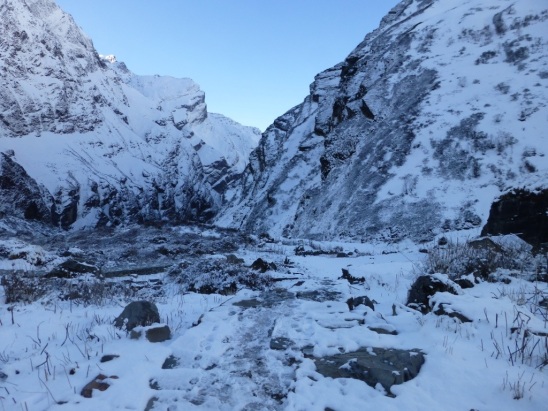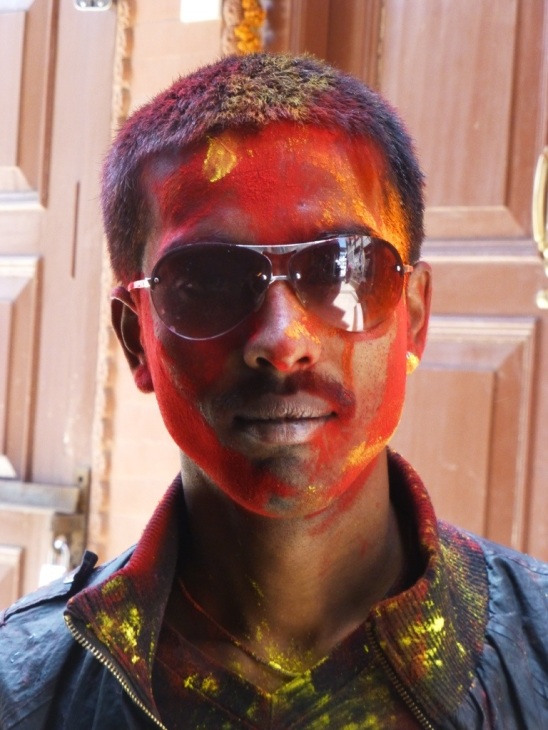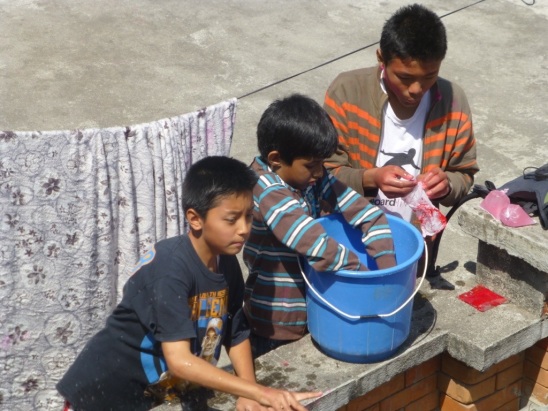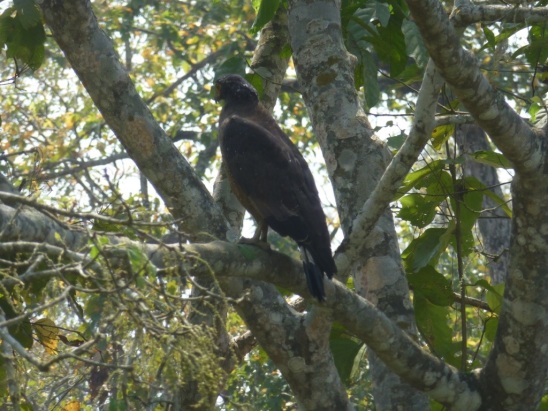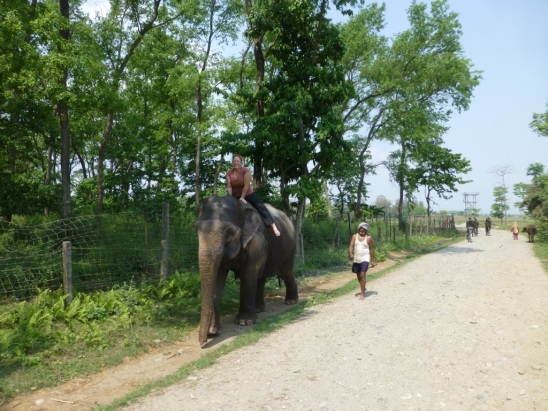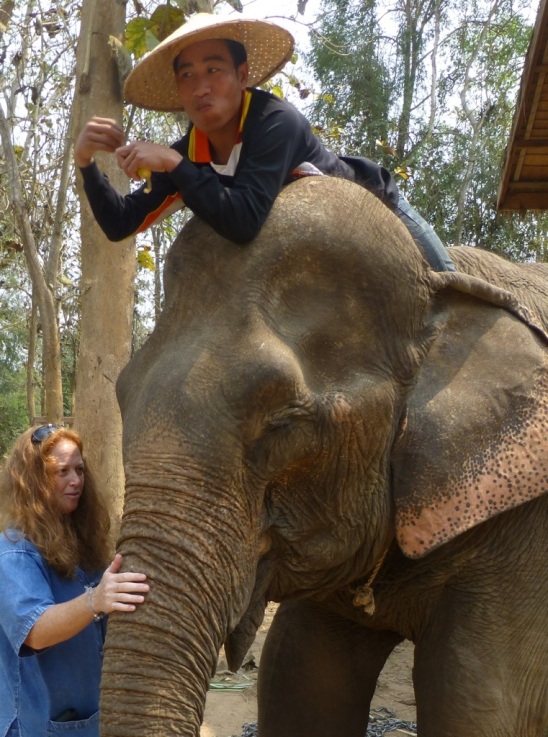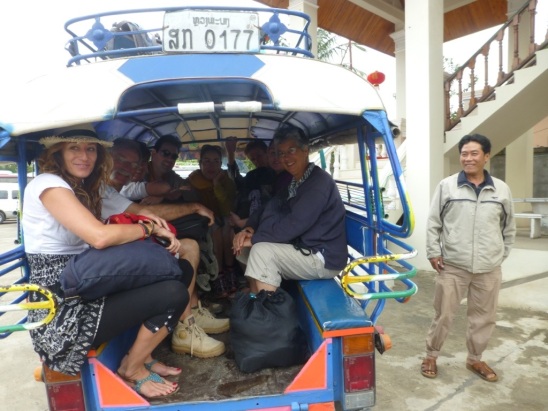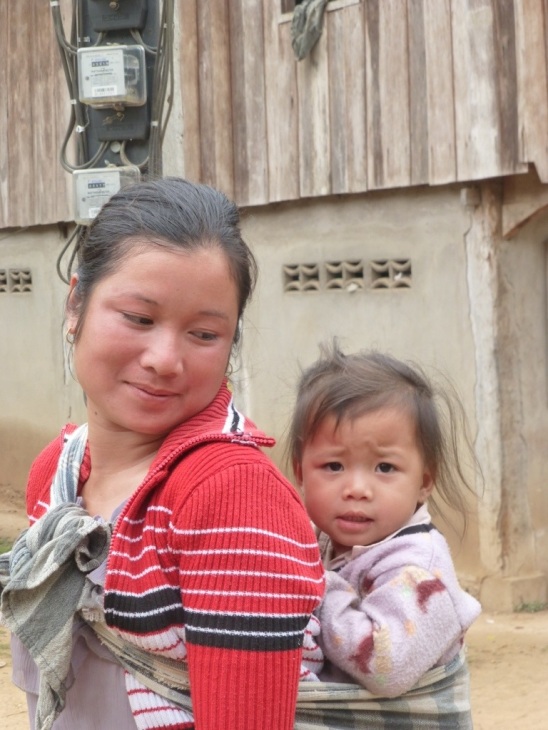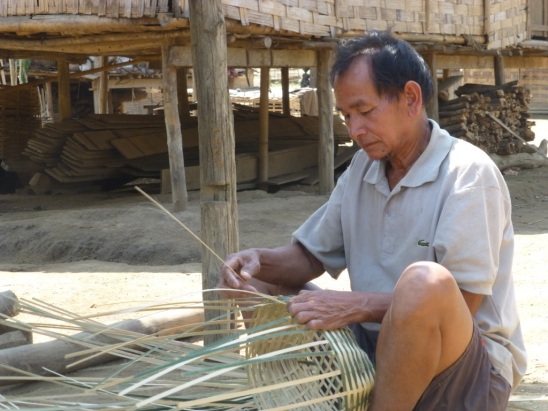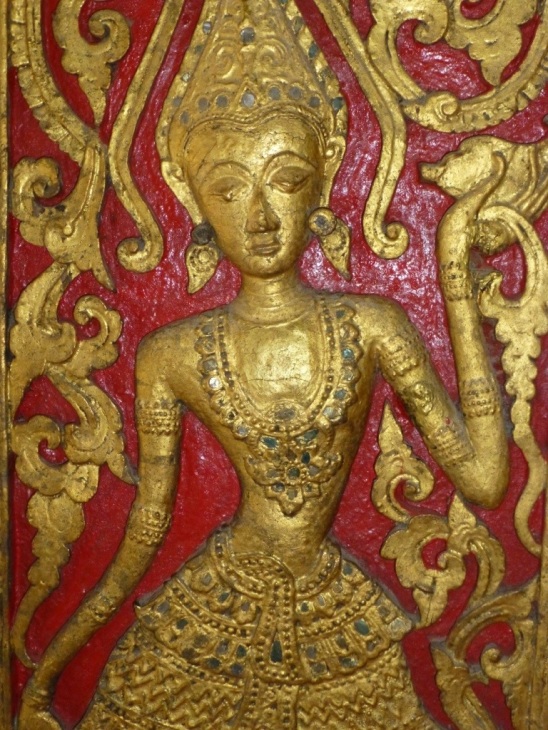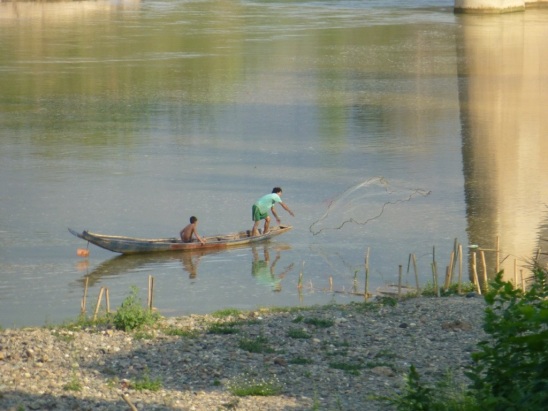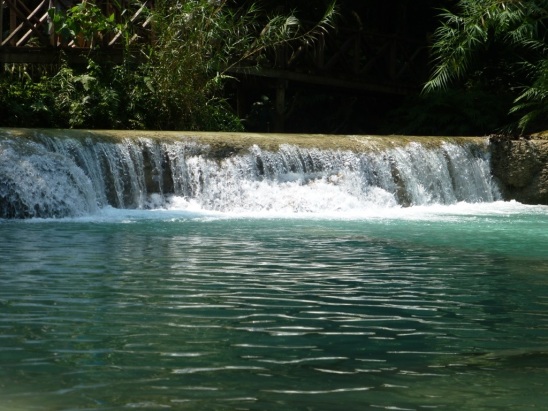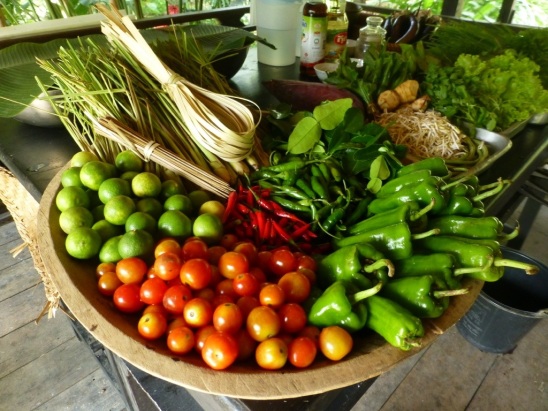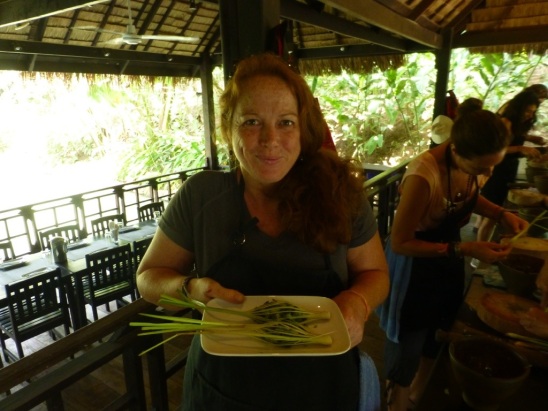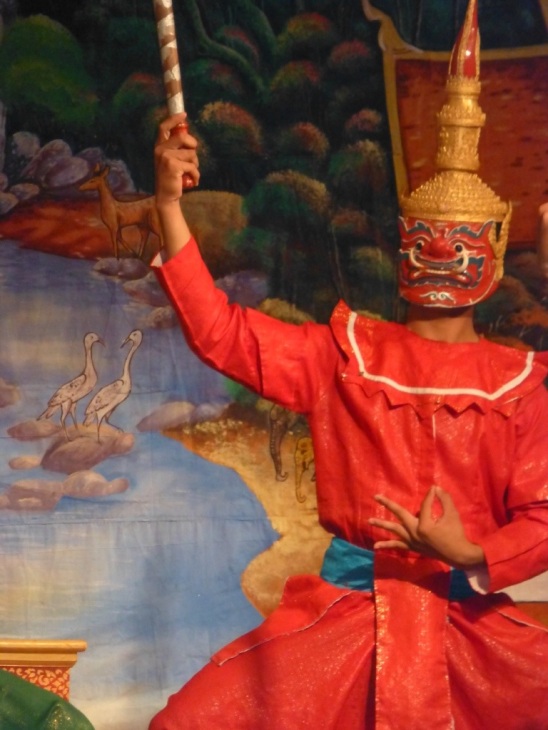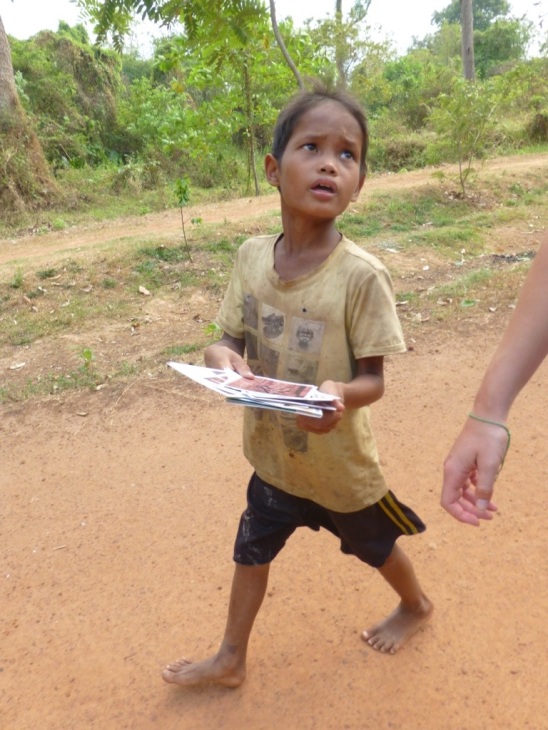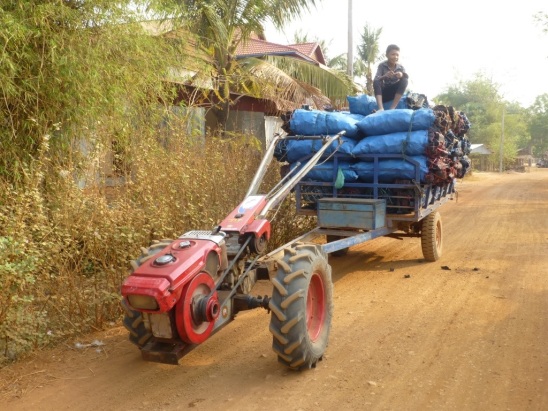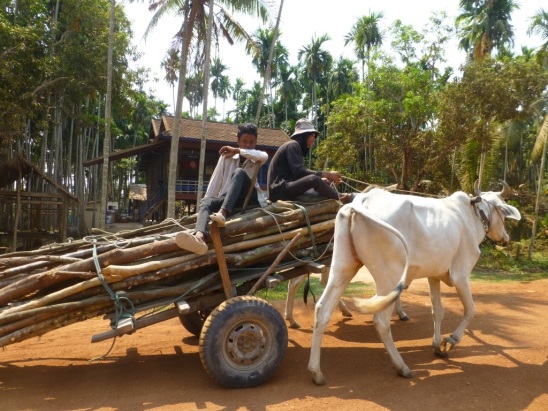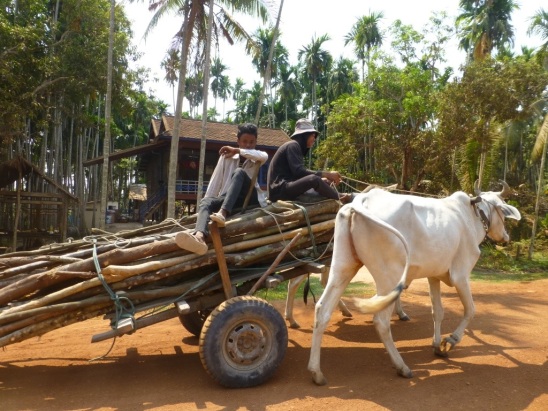Posts from the ‘Travel’ Category
The Cinematography That Is Jordan
So what happens when you show a kid, with a travelers heart, a movie like Indiana Jones, Raiders of the Lost Ark? Answer: They never forget the hero riding through the winding narrow passageway toward a magnificent structure carved in the red rock.
Petra has been on my list since I learned the location of this amazing movie site seen as a child. However, Petra and nearby desert of Wadi Rum is host to what would seem several larger than life Hollywood locations. Let me tell you, I have been there and these sites and are not just a creation of a cinematography technical trick.
No, the sights in Jordan are actually “larger than amazing” and other films that would use southern Jordan as a movie backdrop include the recent Transformers: The Revenge of the Fallen to, the epic film, Lawrence of Arabia.
Petra and Wadi Rum were both inhabited by the Nabataeans which settled in the area in the fourth century BC.
Petra was a large city that was a meeting caravan for merchants from the Silk Road. The community was able control the water supply and create and oasis in the middle of the desert. It had dams to divert the flash floods from a heavy rain and piped in drinking two water systems for the animals, plants and humans.
These innovations lead to a thriving community that inhabited the area until later Roman times when trade was rerouted to the sea. An earthquake in the fourth century sealed its fate, Petra became a lost city, unknown to the world, until a Swiss man rediscovered it in 1812.
The famous Treasury in the Indiana Jones movie is actually a tomb. The Monastery, made famous by the Transformer: Revenge of the Fallen movie is also found in Petra. However there are many buildings carved into the rock which would take several days to fully discover. I found a crazy local guide who insisted on maximizing my time in the lost city.
I saw the sunset past the Monastery from a canvased covered tea house named the “MOST BEST VIEW” by the merchant. After the sun went down my guide ensured me that riding a mule in the dark was perfectly safe. However, the mule was within less than an inch of falling off the cliff on several occasions and I was sure it could not see in the dark.
I held onto the front strap with my left hand and back harness with my right as tightly as I could. I had decided that “if I was going down then the mule was going” with me. I leaned back as far as I could and I was sure that this method of transport, at this time of night, was a bad idea. But I went with it anyway.
The animal clomped down the hill at an eighty or more degree angle. I was positive that walking down would be a better plan but we might miss the Petra by Night show insisted the guide. My guide ensured me that this was better way down the hill and though I did arrive safely some forty-five minutes later, I am sure that I am now well prepare to compete in the World Famous Omak Suicide Race after this mule ride.
I left the ancient city after the night light show and found there was more to discover the next day but still did not see everything. So I someday I hope to return and see the temple at the top of the hill and Arron’s tomb, brother of Moses, at the top of another hill.
I explored enough to get a feel for the greatness of it all, including the engineering feats, to create this city more than two thousand years ago. Oh, how wonderful it would have been to see it in it heyday with sculptures on the walls as you enter the city through the long and narrow passageway.
The Nabatean community also inhabited the desert of Wadi Rum where petroglyphs from as early as the fourth century BC can be found. Both white and red sand can be found in this desert and the brilliant colors are a reflection on the mineral deposits in the rocks.
I spent the night sleeping by a campfire in the desert, just outside of the local Bedouin village in the area. The sandstone and granite hills have been weathered by the environmental elements such as wind and rain to create unique shapes in the rocks. As we toured the desert landscape by jeep and were able to see the location of the film Lawrence of Arabia.
I hope to return one day with my brother who also remembers the Treasury from Indiana Jones….But until our return, we still have the movies.
Katmandu – Peace Among The Chaos
A friend once told me, “Katmandu…I love it and I hate it.” I did not really know what she meant until I traveled there myself. Katmandu was my “home base” for all my Nepalese adventures. The moment I arrived in Katmandu, all my senses belonged to her. My head moved from side to side trying to take in it all; The smells, the colors, the noise, even the feel of it. Yes, Katmandu had my full attention from the minute I arrived.
I thought several times that this would be sensory heaven for any child with a hyperactivity disorder. However, after two days of Thamel, the tourist neighborhood of the city, all the activity bought sensory overload and the “Katmandu Cough” from the stale and polluted air that lingers in the valley. I searched for a more secluded corner of the city and found the Garden of Dreams, an oasis of greenery in a crazy city and Boudhanath, the largest buddhist stupa in the world.
While in Katmandu, I went to the monkey temple to remember a friend, I took a morning flight over the Great Himalayan Mountain Range but I spent the majority of my days around the stupa at Boudhanath. Here I learned to be a tibetan singing bowl healer, circled the stupa with the prayerful and relaxed at the local coffee shops listening to the Om Mani Padme Hum mantra which quieted the souls of both the devote and the traveler.
This mantra, which means “jewel of the lotus”, focuses on the six perfections of Buddhism; These include generosity, ethics, patience, diligence, renunciation and wisdom. I found that the calming mantra allowed my mind to shift from what was happening about me and lead me to a higher concentration to what was happening in the present moment even though the stupa was a bustling place of people and activity.
There was a wide range of ways to worship at the stupa. People would pray in a way that worked for each; For example, devotes would read from old manuscripts, use prayer beads as they recited mantras, spin prayer wheels and repeat a full body bend, kneel, lay flat and back up motion in their devotions. Everyone spun the wheels or walked in clockwise direction so there was order to the mantra heard over the loud speaker.
In the middle of the crazy city that is Katmandu, I was also transformed by the greeting everyone used to say hello and goodbye. “Namaste” which literally means “I see and honor the God in you.”
In this city, that assaults all senses, I found a deep spiritual peace. It makes me wonder what would happen if we stopped and all recognized the God in each person we encounter, in both the meeting and leaving, and thus have to honor God in that person….What would happen? Even though a person may drive us crazy or with whom we have a deep disagreement, if we always honor the God in that person how would that change our relationship with that individual? I wonder if, around the world, we all honored all people we encounter in such a manner, in all our dealings, how it would change the world?
Trekking in the Himalaya Mountains – Part Two
The decent was met with careful footing as we enjoyed the change in scenery from the last time we passed this way. The snow storms over the last two afternoons replaced the stone steps up the hill into an icy slope down. Poles that had barely used on the way up were now careful placed before each step to prevent sliding.
The weather did not deter the porters who continued to haul supplies up the mountain. Donkeys are no longer able to continue up the trail past the village of Sinawa. Therefore, men, women and children carry everything from food, to propane gas, to the belongings of tourists up the mountain. It is not uncommon to see an adult carry a one hundred pound load on their back supported a strap across their forehead.
On my first day of trekking, I saw two women, both with sandals on their feet, each carrying three large backpacks strapped together and one daypack on the top. On that occasion, and several subsequent occasions, upon watching these porters I thought, “These are some strong and hardworking people up here.” I was told that the people get paid by the weight of the packages carried up the mountain. It definitely made me believe I could at least get myself up to where ever we were headed, if they could make it with all that additional weight.
On the way down the snow pack revealed fresh snow leopard tracks near our path. We continued down, back through the rhododendrons, back through the rainforest, back to Chomrong with hot water, geraniums and warmer temperatures. Locals were living their lives near the trail as if we were not even passing through their small villages.
The way to Poon Hill took another three days. Most of the way was straight down for hours, straight up for hours and then repeat. Going downhill for several hours made my knees wish for the “uppa” of the accent once again. However, I had confidence that anything at these heights, 2,600 to 3,200 meters, was definitely doable after going up to ABC.
However, for one glorious hour, between going on steep stretches up or down, we walked on a meandering trail that was not too steep in either direction. We wandered through a new rainforest with evergreen trees and then a rhododendron forest. This is the forest I had read about. The colors were everywhere. Forty and fifty foot tall trees bunched up against one another. Yes, this was the rhododendron forest I had been told about and waited to see.
It was interesting that upon descending the mountain, I had somehow become the expert. The one that others looked to with that impressed, yet hopeful, look for the same accomplishment. Somehow I was the one answering questions on what to expect; Giving words of advice. I was now the one lightening my pack, by giving away what others had forgot on this journey; The hot water bottle that kept me warm, the extra altitude sickness pills and the boots to one who was “just my size” and did not have a pair.
Yes, the decent was also a climb at times. However, now I was able to witness God’s amazing handiwork from another angle. This time I could enjoy the beauty without the fear of failure in the unknown path that was ahead. Now I could give the same encouragement to others on their climb up to the top of the mountain.
Trekking in the Himalaya Mountains – The Assent
“I will catch up in a minute. I want to adjust the straps on the backpack.” My guide said as he gently set down our pack on the short stone wall next to the trail. As I was about to cross the bridge, noticing two paths upon the exit, I turned back and asked, “Which trail do I follow?” “Uppa.” That would be the first time my guide would respond with that one word he would eventually repeat the rest of the day.
Every time there was a fork in the path and I asked the question, “Where should I go?”, “Uppa” was always the response. In fact the more I asked, the more it seemed he gave emphases to the first “p” sound….”Uppp-pa.” After several hours, I wondered why I asked anymore…..I knew the answer would always be the same as he lifted his right hand up, that followed the rise towards the top of the next mountain.
The first day was the hardest. I guess I had pictured myself winding through the forest, flowers everywhere with the snow capped mountains always above me. The reality is that is it was dusty, hot, with donkey crap everywhere and no snow-capped mountains.
Just when I thought I could not go further up any longer, I saw the name of the town where I knew we would be staying overnight painted on a rock next to the stone path. Under the name of the town was written “4,852 STEPS”. I looked up at the stone steps before me and yes, I said something like, “You gotta be kidding me.” I starred up at the path laid before me a minute and then took another step. I found that there were these purple flowers between the cracks of the stones. These were the flowers that kept me going. The further we went up the mountains the more I could also hear the river winding below.
Late in the day we finally arrived to our destination and there was no room in the inn. Well, in several guest houses really, so we continued to walk on. I thought, “This is Good Friday not Christmas”… This is the wrong holiday for this story. Then at some point I sat down on a stone step by another full guest house, ordered purified water and said to my guide, “I’ll sit here on this step until you find a place for the night.”
About twenty minutes later my guide returned and had found a lovely hotel just five minutes further up the path. As I walked up to the patio of the guest house where I saw a short older woman looking down at me. She bowed with her hands folded as I approached, “Namaste.”
“Namaste.” I replied to the woman. After six hours of “uppa” my face must have revealed more then my return greeting. The woman came forward and cupped my face in her hands. “Ohhhh. We give you the best room…..One with the big bed.” I felt immediately at home and that this woman was going to take care of me….And she did.
Oh, I had teased my guide several times that we were not going up anymore and we were going to stay right here the next two weeks. Which made the old woman happy each time I shared my plans. In her slightly broken English she would respond with a smile, “You be part of the family.”
However, the next morning the clouds had cleared and revealed my first glimpse of the mountains. They were beyond words of magnificence and beauty towering before me. I was hooked and ready to to march “uppa” again.
The scenery just got better and better each day we ascended further up to base camp. Every morning the view of the mountains were more stunning than the day before. The green grew closer near the trail. By the fourth day we had walked up into the rain forest.
Moss was everywhere on the limbs of trees, the large boulders and stone trails. The rushing water in the river grew louder and louder as we ascended. The spring run-off from the mountains bottle necked between the narrow rocky shores in the higher elevations. The water crashed on the large boulders in its way, rushing downstream.
The flowers also became more bountiful as we arrived to the rainforest. Rhododendron trees towered above with brilliant red flowers. As we went even higher, the flowering rhododendron trees dominated the landscape in bright pink.
In the higher elevation, I remember waterfalls above me everywhere I looked. Shooting down from the sheer cliff face and in other areas dribbling down a mossy stream towards the larger river below. One morning I look up and a water fall I had seen running in the afternoon sun the day before was solid. The cold of the night had frozen, the now ice sculpture, motionless waiting for the warming sun to unlock her again.
We always started early and tried to end the day before the clouds overtook the sky. By mid afternoon it always snowed or rained. As people gathered we would often see friendly faces in the guest houses. Often you pass people and they pass you as your break schedule and endurance level varies. Therefore, you see the same people over and over again throughout your journey.
There is really no cell phone service or internet connection so even “electronic heads” have to join the conversation. You get to know people. Where they are from, what they are doing and you get to know their aliments too. People who have never climbed to such a height gain knowledge from others coming down the mountain about altitude sickness and the trail ahead. After such a journey, everyone just hopes to make it to their destination without injury. For many of us on this trail the hope was to make it to “ABC”, Annapurna Base Camp.
People are doing this hike for all kinds of reason. A major birthday, another to share an experience they had loved with a teenage son and I met a couple of smokers who were here because they wanted to “test their lungs”. Others were doing the trek as part of a group.
It was clear that not all hikers, like myself, were aware what they had gotten themselves into with their plans. It became clear that the way was not easiest for the most athletic or young but rather the careful and steady. We all were going to the same place. This was not a race but a journey. I found that hikers became amazingly close with others on the same trail who they saw everyday.
You help each other and support each other on their trek….Aspirin, altitude sickness pills, encouragement. No need for the same language to be spoken.
There was a girl from a group from South Korea who sprained ankle on the third day of the trek. She was determined to make it up the hill with her friends. When we saw she had made it we clapped, smiled and shook our heads as if the say, “Yes! You did it.” She smiles widely back and realizes that her accomplishment was recognized.
They were so many times in the first days I was not sure I could do get to the top. I just continued taking one step at a time. It was not until the fourth day that I said out loud to my guide with some confidence, “I think we are going to get to the top.” “Yes.” He replied like he knew that we would all along.
I recognized two friendly faces coming down the mountain on the fifth day of the climb. Two people who I connected with on this journey at different stops. “Hey! You made it!” They shout in union. “Well, in a couple of hours.” “No, no. Machhapuchhre Base Camp is right there.” As they point over their shoulders. “Five minutes away. You did it!.” Tomorrow’s walk will be an easy two hours compared to this.” We talked for a few minutes and they told me what to expect.
“Everybody up there gets a bit of a headache from the altitude. After a night here you will be fine.” As we talked I realized that the people you meet on this journey are so important to your overall experience. You might only know their first name or what country they come from but, even if you come here alone, such people become like your closest friend. You are doing something incredible together and you may never see these people in your life again.
My mind sifts to the other people that have made an imprint on my life this year. There are so many that I have been enriched and blessed to know and I realize that I may never see most of them in my lifetime again. I my eyes glossed over at the thought of such people who have came and quickly left from my life and what a deeply enriching experience this year has been so far. We wished each other safe journeys and continue again on our individual path.
At four-thirty the next morning, we begin our hike to Annapurna Base Camp to witness the sunrise over the mountains. We started off with flashlights to illuminate the snowy trail and the stars were brilliant dots dancing above in the sky. We could see the outline of the mountains beside us as we walked.
When I made it to the top I realized that we were surrounded by the Himalayas. Everywhere we looked another snow capped mountain towered above us. We were so small in the center of them all. Looking up I realized that I had done this great thing; Overcome my own fears of failure, several minor symptoms of altitude sickness, blisters and extreme cold. I had done it and it had been a deeply moving and spiritual experience. One in which I did not know I had signed up for when I had started out.
I will always hold a special place in my heart for these mountains. The photos of these places serve as a reminder of doing something I did not know I could be successful at doing and as a reminder of the internal journey that strengthen my spirit with each step “uppa”.
Holi in Katmandu
Splashes of color and smiles dominate the holiday of Holi to celebrate the monsoon season to come. In Katmandu, it is a day off work for all even though only the Hindu wear the bright florescent colors which are the trademark of this holiday.
It seemed to me that all boys from about eight to fourteen were heavy into the holiday spirit even if their families were Buddhist……Imagine: A free day from school and the entire point of this day was to throw color at people. A day where it was also okay to throw water balloons and squirt water at anyone in sight. I think this holiday was made for boys of this age. I enjoyed watching the the battle happening downstairs safely from the rooftop view of my patio. Such big smiles on their faces as the color and water war had begun.
At some point the boys downstairs decided that I was “free game” and thought I would like to join in the fun. Every time I left the house I had to “watch” out for my young neighbors to minimize the “attack”. Walking about, I saw non-Holi observers smiling at the the chalk covered adults and young children. In Katmandu, this may be a holiday celebrated by few, but in my opinion, enjoyed by all.
Chitwan National Park
In the lowlands of Nepal, there is a jungle which one may have a rare chance to see a tiger or even a leopard. I did not see either while I was in Chitwan National Park even though both had been spotted during my stay. I was okay with this since I was in another national park that did not allow the rangers or guides to carry guns. Somehow the long stick my guide carried by his side was not too reassuring.
The entire time I was walking in the jungle I found myself trying to do two things. The first was to not step on any leaves that would alert an animal to my presence. The second was continually searching for trees I thought could climb if we did encounter an unfriendly animal.
To intensify matters even more, the leopard was not really seen, as much attacked, a man in the village across the field from my hotel. So, I was really okay, almost relieved to have walked through the jungle and back unscathed. I had seen the tiger in India and the leopard in Africa so these two animals were not a “must see” on my agenda.
I did get to watch the black rhino everyday I was in Chitwan. I was surprised how visually different the black rhino was from white rhino I saw in Zambia last fall. The rhino skin looked as it was a hard shell, whereas in Zambia the rhino simply looked like it had really thick grey skin. “The arrow can not pierce the skin of a rhino.” My guide informed me. “If we see one, we have one thing we need to do.” “What’s that?” I questioned. “Run.”
After trying to smile it off he said he was actually serious but we needed to run in a “zig zag”, changing directions every twenty to thirty meters. “They have poor eyesight and if we are quiet as we run then they will have trouble following us when we change directions. Another advantage of changing directions is that the rhino has a difficult time turning their large frames to follow. As we run, you should throw clothing down to cause additional confusion to the direction we are heading.” I remember that this is the same advice I was given for the white rhino in Zambia so both must have some universal traits.
Most people buy a “package deal” of activities in Chitwan so the hotels keep you busy the entire time you are here. Jungle walk, canoe trip, elephant ride, watching the elephant bath, cultural show, elephant breeding center visit. It does not matter the star level of the hotel. Everybody is doing the same activities and I found that I ran into the same people over and over. My favorite activities was the canoe trip and two activities not on the “usual” menu.
The canoe is actually a dugout canoe from a single tree and they pack the groups into each boat. “Are you sure there is room for us?” I asked my guide. “Sure, they fit twelve people.” “Twelve people of what size?” My guide, Prabin, did not respond as I careful boarded the tippy canoe with the water inching up towards the sides.
We saw lots of birds from the river, my favorite was the blue, brown and white Kingfisher. The bright blue was so beautiful when they spread their wings to fly. There were also several crocodiles hiding between the lilies and in the mud on the banks of the river.
Since my guide knew that I had spent time learning to be a mahout in Laos, he arranged for me take their elephant to the river for it’s daily bath. I felt pretty lucky to do this since I was the only tourist around which had been able to have this experience. Prabin translated for me as this elephant/mahout pair spoke Hindi. I was glad that this mahout was a gentle teacher as in my first experience in Laos. Other mahouts watched and smiled as I worked with our elephant.
One night the resort arranged for me to stay in one of the few “tower” accommodations in the jungle. I loved this because our second floor cabin was in the middle of a grassy field which at dusk many animals found their way to feed. It was also a safe place to watch the wildlife so I found myself enjoying this better than the jungle walks.
We watched a mother and baby rhino for a long time make their way through the field. We saw wild boar, peacocks but my favorite were the spotted deer. There were over forty grazing away in the afternoon light. After dark I was able to have an unexpected treat….Fireflies!
“Is that a firefly?” I question looking at the small bright light floating in the tree next to me. “Yes. It is a firefly.” “Wow! I have never seen one before.” Prabin went below to catch one so I could look at it close up. It looked like a regular insect on top. The florescent light came from underneath. It quickly flew away when we opened our hands wide.
I found the national park in the lowlands of Nepal a wonder place full of surprises and caring people wishing to show you her treasures.
Learning To Be A Mahout – The Rest of the Story
Our first glimpse of the elephants saw them all hard at work. Several were already carrying tourists on bench saddles belted to their back like a horse. Others were munching on green leaves set in front of them. They too were ready to be ridden with a saddle already attached. One at a time the mahout (elephant trainer) commanded their elephant to walk to the platform where eager foreigners waited for a ride. “Okay.” I heard someone say to the next tourist in line as he tilted his head toward the elephant as if to said ‘it was his turn’ to get on.
Each tourist carefully grabbed the side of the bench and placed each foot near the front shoulder of the elephant before sitting down. I could see a look of gratefulness across each face as they realized they had “made it” without falling between the fifteen foot platform and the elephant beside it.
A large tour bus parks nearby and at least twenty people are lead to the stairway going up to the small platform.
“Okay, we need to split you into groups.” My attention is redirected back to our guide. “Everyone who signed up for the ride and the river kayak stand over there.” This is the point we realized that most of the new faces we met on the shared minivan ride would not be with us the rest of the day. Only four of us had signed up to learn how to be a mahout for a day. A teacher and baker from Ireland, an engineer from Germany and myself.
We were lead away from the elephants to change into our official mahout uniforms and to learn about asian elephants. This included learning the commands we would need when working with the elephants later in the day.
Every elephant has one mahout which always works with the same elephant. It is clear to see that the pair have a very close bond. Elephants have terrific memories and I would come to learn that each has a very different personality.
I was very lucky with my first elephant/mahout pairing. “Don’t worry. She is very gentle.” The main tour guide said to me as I reached to get on the bench on top of my elephant. I would find that her mahout was likewise very a gentle soul.
I was glad that this seat had a bar that fitted across the front of the bench. When I had ridden an elephant in Thailand, years earlier, I remember holding on to the back of a similar bench with both arms when going down a steep hill. I felt steady with the wooden bar in front of me. “This is much better. I am not going to slide off this bench with this bar to push back on.” I thought to myself.
Within a few minutes of leaving the platform my mahout, Sing, pointed at the bar. “You want bar?” He seemed to nod, “Okay, here you go.” I handed the bar to Sing as he motioned for me to scoot over. I moved to the left on the bench and he hopped up beside me. “Who is going to drive this thing?” I said looking over to him. Sing pointed for me to get on the elephant. I was realizing that the commands I had learned earlier that day were all the common words between us but we seemed to communicate just fine.
One foot after another I crawled on Tahoot. She was steady as walking on granite. I was immediately comfortable. Sing motioned for me to move my hands forward on the top of her head. It seemed more comfortable so I figured it was the proper position. I looked back to see Sing’s face and determine how I was doing. Sing had replaced the wooden bar across the bench and was curled up behind it, resting but keeping an eye on me. I figured I must have been doing okay for him to be so relaxed.
The elephants in front of us were not being as compliant. The other mahouts were having to assist and prod their elephants to move. Hubert’s elephant was being particularly difficult. Turning the wrong way, stopping to eat at whatever looked greenest and deciding to halt and not budge an inch at times.
I was able to use several commands to stop, move to right or left around the others and go at will. The others used “ya, ya” several times which means “no, no.” I was glad I never had to do that with Tahoot.
Next thing I knew, Sing was off the bench and assisting the other mahouts. He walked beside Hubert’s elephant.
Tahoot and I were the last to reach the top of a steep downward incline. “Emma, do I need to do anything differently?” Emma, the teacher from Ireland had just went down the hill. “Your elephant will do everything. Just squeeze you legs together and lock you elbows.”
Emma watched from her elephant. Upon making it down the hill she said. “Good job.” She looked over to my mahout busy with Hubert’s elephant and added, “I guess they don’t think you need any help.”
From that point on Tahoot and I were bonded and I completely trusted her. I could see that Sing looked back every one in a while and it was clear I had his nod of approval.
In the late afternoon they assigned us to a different elephant team. I was not excited to leave Tahoot but I guess they wanted us to have different experiences. I am glad I was assigned to Tahoot and Sing first as I was able to build my confidence with such a calm elephant and encouraging trainer.
My second pairing was not as delightful. Both the elephant and mahout had a cantankerous streak. For example, I wanted the elephant to stop, to leave a “‘little personal space” (2-3 feet) between us and the next elephant and my mahout would command him to go budging right up to the other elephant. I would tell the elephant to go left down the stream and the elephant choose to go right up the embank on a narrow pathway. “Okay, not the way I wanted but that works too.” I told the elephant who was not paying much attention to me.
When we reached the river for his afternoon bath I found that the elephant and the mahout were paying attention. I am now positive that they conspired together to have some fun at my expense.
I gave the command to spray and my elephant completely dunked giving me a bath. I looked behind me and my mahout was standing up and balancing on the only part of the elephant not in the water. I thought, “He had to know that the elephant was going to do that to know stand on the back of the elephant before he went under the water.” Next, my mahout had the elephant walk right behind another elephant going to the bathroom and commanded her to dunk again. The elephant, which had a habit of doing what he pleased, was quick to comply. All I could do was cover my mouth and hold on. Now I knew that they were on the same wavelength….And possessed same personalities.
I seemed to pass some initiation because after that my second mahout and elephant seemed to try harder to get along. (Though I must admit I made sure my mahout did not continue to stay dry after I was dunked the second time. Maybe he just decided to back off and get along.) At any rate, the new elephant and I finally bonded and I realized that elephants, like humans, have strong nonverbal skills, unique personalities and can have a stubborn streak….But in the end, given enough time, it is hard not to become attached even to the most difficult.
Nong Khaiw — Now That’s Relaxed Right There
When you buy a bus ticket anywhere in Southeast Asia you never really know what to expect. I find that I always serve myself better by lowering my transportation expectations by several notches in third world countries, even when the local travel agent makes assurances of air conditioning, your own seat, and bathroom stops…..Then maybe you will be pleasantly surprised.
Monique and I waited for our transfer vehicle only to find seven passengers in the back of the tuk tuk. My first thought was, “Here we go again.” After only a couple of issues at the bus station, such as the tour company forgetting to pick up the third companion in our group, we left Luang Prabang only a couple hours late.
After an interesting journey we arrived in record time to Nong Khaiw and hiked the rest of the way into town. We had reserved a lovely bungalow by the river. It is best to reserve accommodations up here, especially in high season, as there is a limited selection.
I was not sure what to expect in Nong Khaiw as my guide book only had two paragraph’s on this place. However, based on recommendations of fellow travelers we decided to explore on without guide book recommendations.
The mountains seem to keep folding one after another outside of this little valley. A river winds through. No one seems to notice or care there is a new tourist in town. When we arrived at our hotel the security guard was asleep. That would be our first real sign of the pace we would find here.
We mellowed out on our balcony and later rented inflated tubes to float down the river. We couldn’t find anyone to pay to drive us to where tourists put the floats in the river so we had to walk. It was the first time a tuk tuk ever refused to take a fair in all my world travels. “His day off.” someone said, as I tried to get the tuk tuk drivers attention. Then the man pointed the dirt road we should walk up.
I did not know why all the locals were smiling until I realized that we would have to carefully step down a steep muddy embankment full of overlapping greenery to get to the river. By the time we reached the water we were all laughing.
Later on we found a tour company to take us mountain biking up the valley the next day. We learned quickly that the gears on the bikes were in a bit of disrepair and only one of my brakes worked. But we figured we could survive one day on the bikes as we were excited to get in the mountains and to get some exercise.
We were able to visit four villages which, as always, were an eye opener and makes one thankful that we can afford to ride bikes in disrepair when other could not.
We saw children caring for children as their parents work in the fields. Other unaccompanied kids were picking up nuts on the side of the road to sell and eat. One of them had an untreated lazy eye. Some boys played soccer from a homemade ball. We found old women carrying heavy loads while many old men found ways to keep their hands busy. Other elderly starred off into the distance and seemed to observed the day away.
All the children seemed to be interested in the cameras we are holding as they, and some adults, want me to take a picture of them and then want me to show them photo. They want to know how they look.
We had asked our guide to fix a vegetarian meal for lunch. Somehow we thought it would be safer. We knew that he had purchase the traditional food wrapped in banana leaves from the market early in the morning. I figured the food was sitting in a warm backpack for at least six hours before lunch.
Our guide cuts down a couple banana leaves for a table and we sit beside the river. “Wow. What do we have?” We asked. “This is eggplant. Here we have noddles. This is sticky rice. Here is river weed. This is fish.” Our guide pointed to each unwrapped item in front of us.” I pick up my noodles and start eating until I notice something brownish. “What this?” “It’s water buffalo blood.” “I thought that this was a vegetarian meal?” I questioned. “It is….No meat.” “I generously offered up my portion of noodles to any takers.”
I think my mother would have been proud that I tried a small amount everything else. However, I must admit that I mainly stayed with the sticky rice for that meal.
That afternoon we would kayak back to Nong Khaiw. It was a pleasant paddle down the river with the green hills around us and the limestone cliffs above. Our guide decides that we should break for a swim. Shortly after pulling our boats on the sandy island we we realized that our guide was completely conked out in one of the kayaks. “What is it with this place? Everyone sleeps on the job.” Monique notices. We all laugh.
When our guide awoke we completed our paddle early enough to meet the sunset back at our hotel. The next day we choose to take the slow boat back down to Luang Prabang.
Several times I thought, “I could spend some time in retirement in this town.” It was one of the first places that I thought someone could get around with a cane or a walker. And well, it seems that it is perfectly fine to take a cat nap on the job. Now, that’s relaxed right there.
You Are Going to Love Luang Prabang
“You are going to love it here! Listen to that.” Monquie, a new friend from my Cambodia travels and who arrived a day earlier in Luang Prabang, Laos, stated enthusiastically. “What?” I questioned. “Nothing. No tuk tuk horns, no people asking you to buy anything. Isn’t it great! I feel so relaxed here and I have only been here a day.”
We walked through the night market together and I noticed that she was right. This was the most peaceful it had been outside of my hotel in over two weeks. Walking in front of the vender stalls, the busiest part of town, merchants would only ask if you wanted help if you had stood there awhile.
During my time in Luang Prabang, I spent idle time watching the river and fishermen casting there nets, made trips to see local Buddhist temples, visited local villages, watched the sunset from a wat on the hill (a fun 338 steps to the top) and of course attend another dance/theater performance.
I also visited the small cultural museum and royal palace. The throne room of the royal palace should not be missed, even if “you are not a museum person”. I believe that it rivals any other royal interior I have seen in Southeast Asia. The majority of the throne room is painted red and intricate colored mirrors cover the walls. The mirror images tell the story of the Lao people and their traditions. A grand crystal chandelier hangs from the center of the room. The throne and other furniture about the room are painted in brilliant gold. Unfortunately visitors are not allowed to film the palace but I am sure there are pictures of the palace online if you are interested.
An unexpected surprise in the palace was a gift from President Nixon of the United States to the people of Lao. It was a miniature flag of their country that had went up in Apollo 11, the first manned mission to land on the moon. Also in a glass casing on the plaque were moon rocks from that first mission.
We woke up early to give alms to the monks as is common in Luang Prabang. Every morning at six, monks walk silently down the street with their alms basin. Locals and tourist alike give food alms as they pass on their way.
My favorite three days were spent just outside of Luang Prabang. The first was a wonderful day spent hiking and visiting beside water that fell down into countless aqua pools. The water was perfect for a little swim in the afternoon heat. Monquie and I had also signed up for a Lao cooking class. We started at the market learning how to pick the freshest ingredients then we went to a lovely cooking school outside of town where we each had our own cooking station. I now know how to really roast vegetables and stuff a piece of lemongrass. My favorite day was spent in the jungle learning how to be a mahout or elephant trainer.
It seemed that most travelers had a hard time leaving this town. So many activies if you choose to do any at all. Luang Prabang is not to slow, not to fast paced, it was just right.
Beyond the Temples
Beyond the Temples of Siem Reap are its people.
Hopeful merchants outside every temple parking lot encroaching on weary foreigners. Young children happily visiting until they notice someone entering or leaving a temple. Their eyes turn sad as they count the postcards for sale, “One, two, three…”
Other children in uniforms ride their bicycles to school. We also find locals driving the roads using a variety of mechanical contraptions. Tourist mix in, pedaling or riding tuk-tuk’s to the ancient treasures while others speed by in large tourist buses.
Outside of the main temple circuit, one can see more and more folks farming and going about their daily life away from the main attractions. In the country, families sell goodies they have created by the side of the road such as candy and sticky rice wrapped in banana leaves. Nearby their children play carefree.
This is Siem Reap, beyond the city, between the temples.






